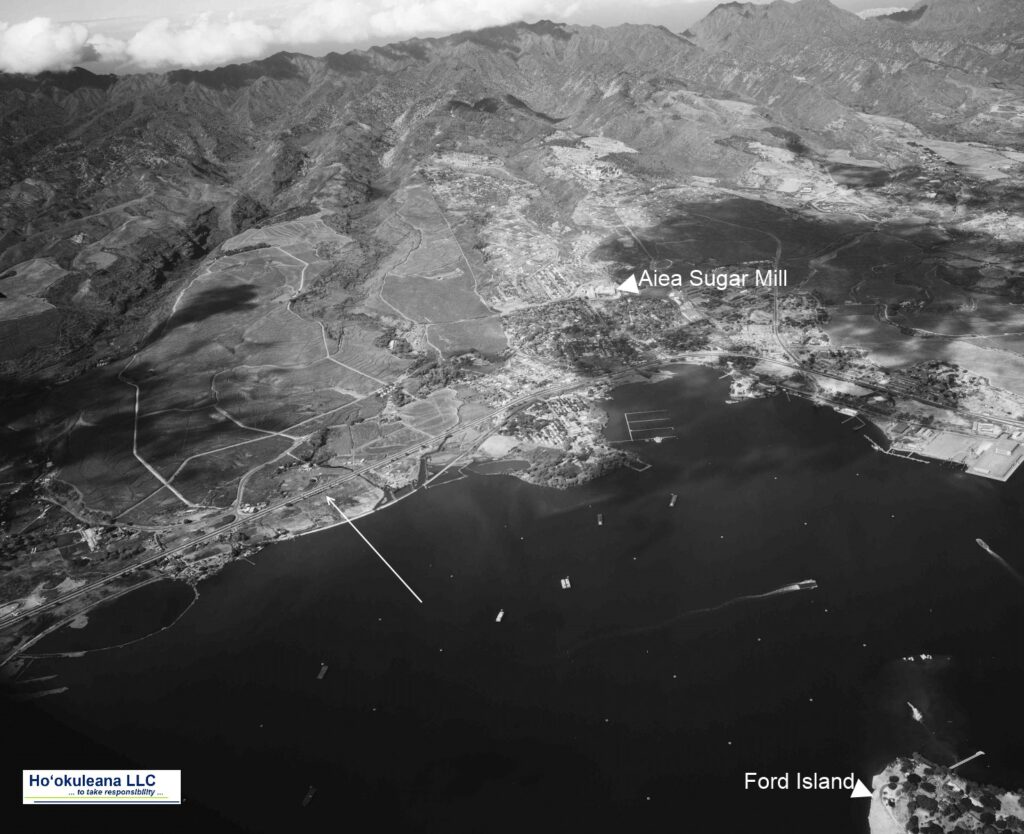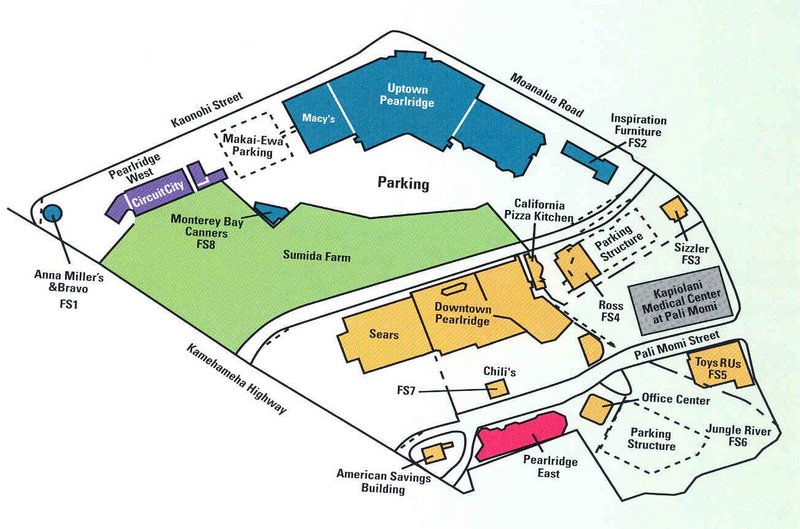The Wailuku is the longest river in Hilo (twenty-six miles.) Its course runs from the mountains to the ocean along the divide between Mauna Kea and Mauna Loa. The Wailuku is the boundary between Hilo Palikū in the north and Hilo One on the south.
The earliest recorded bridge in Hawai‘i was a crude footbridge across the Wailuku River in Hilo and was reported by missionary C. S. Stewart in 1825. (The first major bridge on O‘ahu appears to have been one extending North Beretania Street across Nuʻuanu Stream, erected in 1840.) (ksbe)
“About a hundred yards above the beach, it (the stream) opens into a still deep basin, encircled by high cliffs. Into this basin the whole stream is projected by two cascades … A rude bridge crosses the stream just above the falls; and it is a favorite amusement of the natives to plunge from it, or from the adjoining rocks, into the rapids, and pass head foremost over both falls, into the lower basin.” (Stewart, Schmitt)
The Wailuku River bridge must have existed for only a short time, and it was quickly forgotten. Sereno Bishop, born on the Big Island in 1827, later recalled, “There were no bridges in these islands until after 1840.” Titus Coan, the pioneer missionary who settled in Hilo in 1835, wrote, “For many years after our arrival there were no roads, no bridges, and no horses in Hilo”. (Schmitt)
Hilo’s Wailuku River was finally spanned again in September 1859, this time by a 196-foot-long suspension bridge. Less than seven weeks after it was opened, this bridge collapsed while a party of eight or ten persons and their horses were attempting to cross. The group narrowly averted drowning and death by falling timbers.
This was not the first disaster or near-disaster at the site of the Wailuku Bridge. Weakened by earthquakes and a tsunami, the railroad bridge over the Wailuku River collapsed on March 31, 1923 – immediately after a loaded passenger train had crossed and another was approaching.
Two of the largest bridges on the Hawai‘i Consolidated Railway were destroyed by the 1946 tsunami, a disaster which effectively put that railroad out of business. (ksbe)
Waiānuenue Avenue (rainbow (seen in) water) in Hilo town is named for the most famous waterfall in Hilo, Ka Wailele ʻO Waiānuenue, Rainbow Falls. There is a legend about this falls, the goddess Hina, her son Māui and the lizard-man Kuna.
Hina once lived in the cave beneath and behind the waterfall. Kuna would throw logs and boulders over the edge of the falls to try to cause harm to Hina. She called to her son Māui and he came quickly to her aid. He chased Kuna upland along the river, where they engaged in many battles.
Finally, Māui emerged the victor, though only because he was aided by the volcano goddess Pele. Hina was now safe. Many places along the Wailuku were named to commemorate different parts of the story so that the legend would not be forgotten. (Zane)
The local utility Hawaii Electric Light Co (HELCO) owns and operates two hydroelectric facilities arranged in tandem along the lower reach of the Wailuku River near Hilo. The Waiau plant was constructed in 1920 and upgraded in 1947. The Puʻueo plant downstream was built in 1910 and upgraded in 1941. The Wailuku River Hydroelectric Power Company plant began commercial operation in 1993. It is located at the junction of the Wailuku River and the Kaloheahewa Stream.
A 6-foot-diameter intake pipe for HELCO is located about 100 feet above Ka Wailele ʻO Waiānuenue. The intake feeds the utility’s Puʻueo Hydroelectric Plant located down on Wainaku Street, several blocks from the ocean.
About a mile upstream is a section of river called Boiling Pots, as well as the Peʻepeʻe Falls.


































